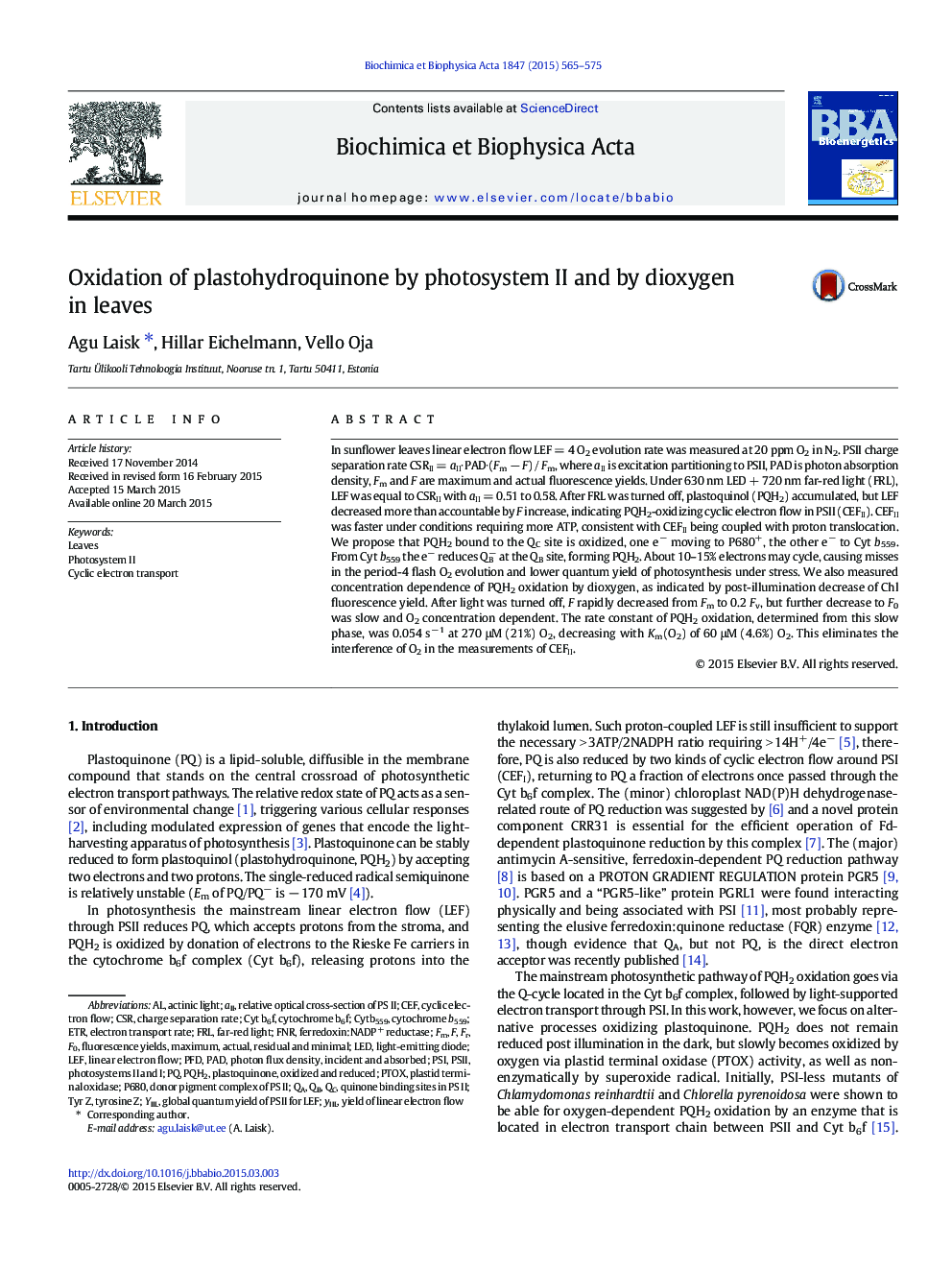| Article ID | Journal | Published Year | Pages | File Type |
|---|---|---|---|---|
| 8298720 | Biochimica et Biophysica Acta (BBA) - Bioenergetics | 2015 | 11 Pages |
Abstract
In sunflower leaves linear electron flow LEF = 4 O2 evolution rate was measured at 20 ppm O2 in N2. PSII charge separation rate CSRII = aIIâ PADâ(Fm â F) / Fm, where aII is excitation partitioning to PSII, PAD is photon absorption density, Fm and F are maximum and actual fluorescence yields. Under 630 nm LED + 720 nm far-red light (FRL), LEF was equal to CSRII with aII = 0.51 to 0.58. After FRL was turned off, plastoquinol (PQH2) accumulated, but LEF decreased more than accountable by F increase, indicating PQH2-oxidizing cyclic electron flow in PSII (CEFII). CEFII was faster under conditions requiring more ATP, consistent with CEFII being coupled with proton translocation. We propose that PQH2 bound to the QC site is oxidized, one eâ moving to P680+, the other eâ to Cyt b559. From Cyt b559 the eâ reduces QBâ at the QB site, forming PQH2. About 10-15% electrons may cycle, causing misses in the period-4 flash O2 evolution and lower quantum yield of photosynthesis under stress. We also measured concentration dependence of PQH2 oxidation by dioxygen, as indicated by post-illumination decrease of Chl fluorescence yield. After light was turned off, F rapidly decreased from Fm to 0.2 Fv, but further decrease to F0 was slow and O2 concentration dependent. The rate constant of PQH2 oxidation, determined from this slow phase, was 0.054 sâ 1 at 270 μM (21%) O2, decreasing with Km(O2) of 60 μM (4.6%) O2. This eliminates the interference of O2 in the measurements of CEFII.
Keywords
Related Topics
Life Sciences
Agricultural and Biological Sciences
Plant Science
Authors
Agu Laisk, Hillar Eichelmann, Vello Oja,
